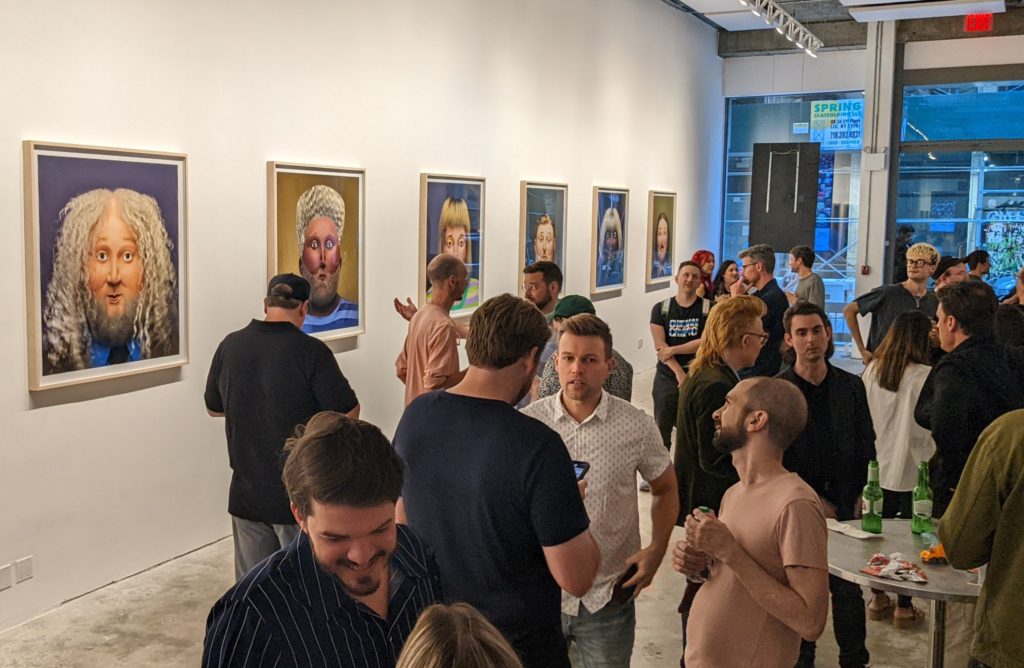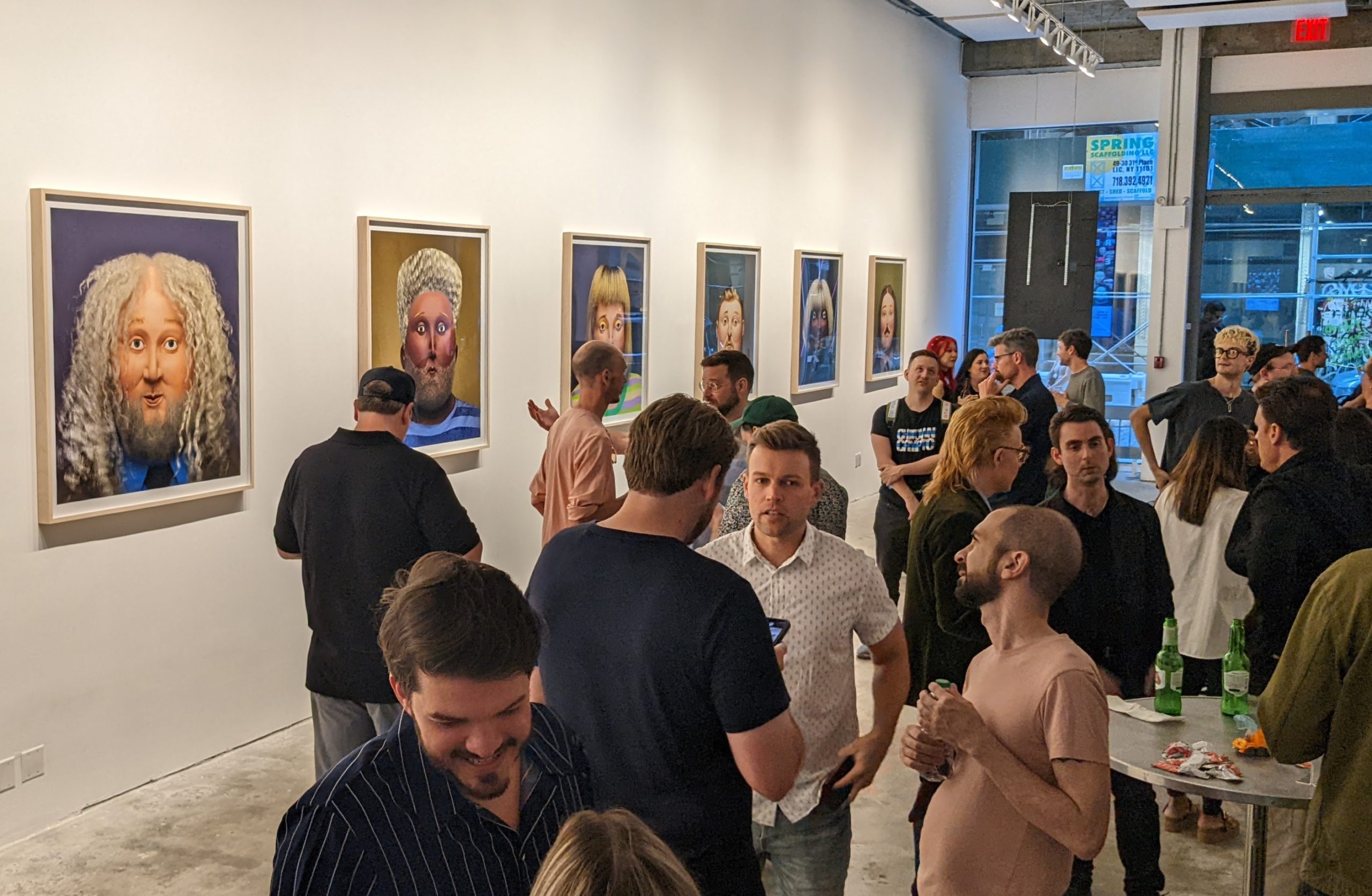
For over a year, the only place I viewed my collection of NFT art was either on my home computer monitor or on my phone.
In other words, my experience of NFT art was a hunched-over affair. I was leaning forward and squinting to see the details of the art I had collected.
Then I went to NFT NYC.
I spent very little time at the main conference. Mostly I attended private events.
The first of those events was at the Samsung 837 building in the Meat Packing District. They have an amazing selection of screens, all of which were filled with generative art minted on Art Blocks.
I’ve been slower than many to get out into the world of live conferences. So this was the first time I had seen NFT art on large screens.
If you’ve been to that building, you already know there’s one screen that dwarfs them all. It’s huge. Three stories high.
I stood there, mesmerized by the pieces of art that were being shown there. It was on a one-hour loop, including one piece from my own collection.
Suddenly, and irreversibly, NFT art was no longer something that existed just on small computer screens. Nor was it something viewed by one person at a time, in private.
This was NFT art being viewed in the same way as traditional art. The art was being shown at size, in public.
This journey from private viewing on very small screens to public viewing on very large screens is a huge deal.
And that was just the start.
Next, I took the subway over to the Venus Over Manhattan gallery.
This is a traditional New York art gallery. Very exclusive. And inside was a collection comprised of dozens of Chromie Squiggles by Snowfro, founder of Art Blocks.
Once again, I was being dragged from viewing squiggles on my phone, one at a time, to seeing an entire collection on display on the walls of an exclusive gallery.
Then I set off south to the Bright Moments gallery.
Again, a traditional art gallery, filled with art lovers, looking at a wall of framed prints, created from the Regulars collection. But Bright Moments is probably best known in the NFT art world for its live mints. They’re mid-way through an ambitious plan to mint 10,000 CryptoCitizens, 1,000 at a time in 10 different cities around the world.
All this is a far cry from minting and looking at art in private on your own phone.
Maybe 1% of NFTs make the leap into the physical world.
I’ve no idea if 1% is accurate. But for sure, the proportion of NFT art that gets out into the physical world is very, very small. Most projects will remain digital forever, and will be viewed on small screens.
And for many projects that will be just fine.
But what about that 1%? When NFT art is viewed in galleries and museums, it becomes a whole new “thing”.
And when it is displayed as a print, that’s very much a new thing.
Here’s question for you…
When physical prints of NFT art appear in galleries, does this represent a new gateway into the NFT world? Is this how we attract traditional art collectors into the digital realm?
Or does it do the opposite? Does it provide traditional collectors with an option to buy the art without participating in crypto?
For example, what if a traditional collector, with no interest in crypto or NFTs, walks through the gallery and wants to buy the framed print?
They don’t want to do the whole crypto, NFT thing. Not interested. They just want to buy the print.
What happens?
For now, I guess collectors will have the bite the bullet and buy the NFT, or find someone to do it for them. But what about the future? Will there be an option to simply buy the physical art, even if its origin was as an NFT?
And what if a collector wants to buy that framed print with US dollars?
Will that be OK? Is that an option the gallery will provide?
And what if crypto-native collectors also want to price and buy their NFTs in US dollars?
This is a separate question, but related.
Some collections, like Fidenza by Tyler Hobbs, fetch high prices and are coveted by serious collectors and investors with deep pockets.
Over the last 6 months the floor price of a Fidenza has been fairly steady when priced in eth.
But, as we know, the price of eth is down by about 70% over the same period. Which means the price of a Fidenza is also down 70% if you convert the eth into US dollars.
Not good. And a little odd, if you think about it. If the perceived value of the collection has remained pretty much the same, which I think it has, why hasn’t the eth floor price risen by 70%?
Will collectors always be OK with that? Or is crypto simply too volatile when it comes to pricing top-end NFT art?
Maybe, at some point, some NFT art will simply decouple from crypto.
Maybe it just becomes art, and will be priced in US dollars.
And if that happens, what are the implications for NFT art as a whole?
More broadly, where are we going?
